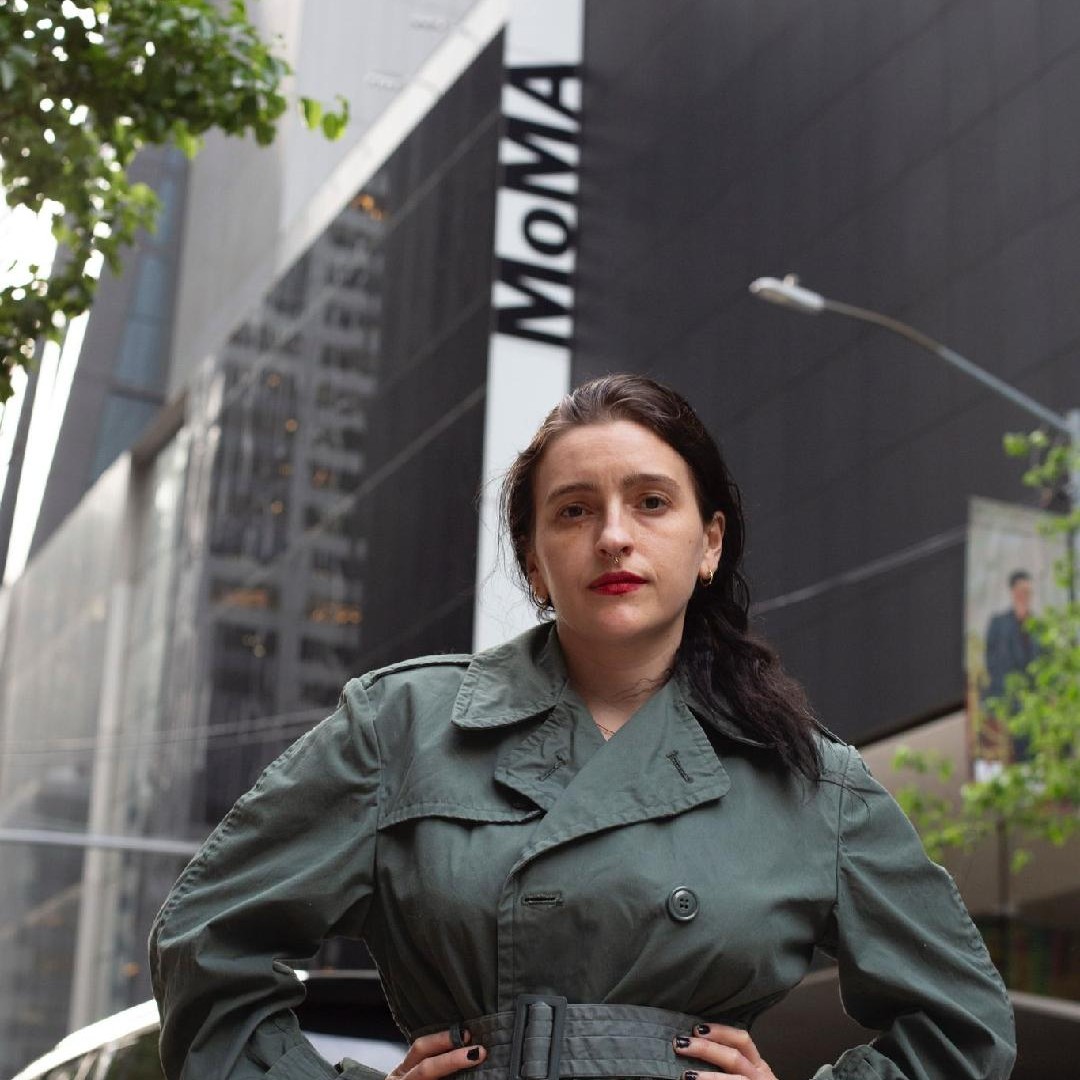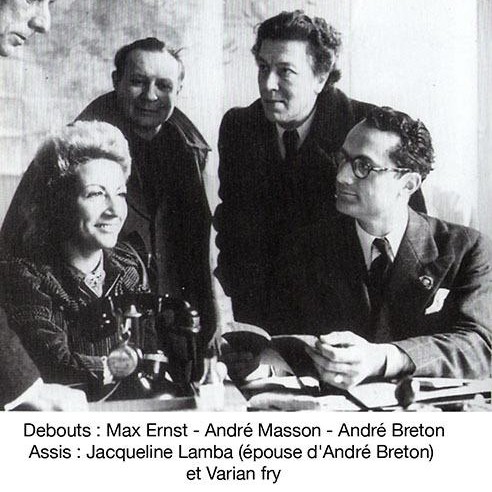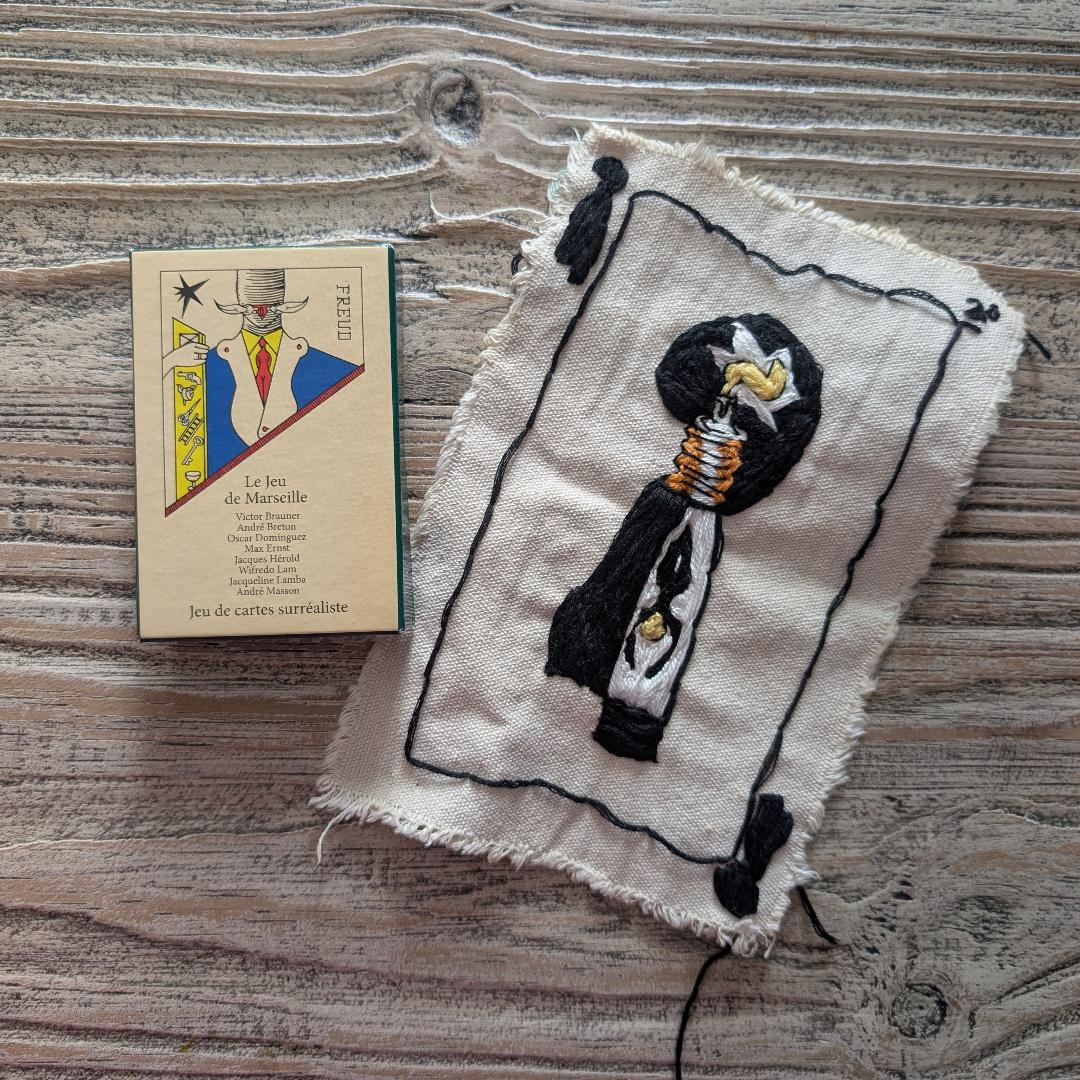
Alexandria Deters est une artiste multidisciplinaire basée dans le Bronx, à New York. Elle est également écrivaine, archiviste et experte en art américain, formée au Sotheby’s Institute of Art. Sa pratique mêle broderie, photographie, vidéo, recherche historique et texte.
Depuis plus de dix ans, elle utilise la broderie comme moyen d’expression personnelle et politique, intégrant souvent des images d’archives, des extraits de presse ancienne, ou des éléments autobiographiques. Son travail interroge la mémoire collective, les récits historiques, et la façon dont les individus laissent une trace dans l’Histoire.
Elle a exposé dans de nombreux lieux à New York et au-delà, notamment lors des foires SPRING/BREAK Art Show (2021–2023) et à l’Outsider Art Fair. Elle développe également une réflexion critique sur l’art contemporain à travers des articles publiés dans divers médias spécialisés.
Son projet actuel, « The Marseille Connection (Varian Fry) », mêle art textile, photographie et vidéo, autour de la mémoire de l’exil artistique à Marseille pendant la Seconde Guerre mondiale.
Credit photo : @ Ross Collab, 2025

En aout 1940, dans une France divisée et sous la menace nazie, le journaliste américain Varian Fry arrive à Marseille, mandaté par l'Emergency Rescue Committee. Sa mission : venir en aide aux artistes, écrivains, intellectuels et opposants politiques menacés de persécution en Europe.
Pendant treize mois, malgré des moyens limités et dans contexte de surveillance croissante, Fry met en place un réseau de sauvetage clandestin qui permettra à plus de 2000 personnes de fuir, dont près de 300 de manière directe. Parmi elles figurent Max Ernst, Marc Chagall, André Breton, Jacques Lipchitz, Hannah Arendt ou encore Claude Lévi-Strauss.
Basé notamment à la Villa Air-Bel, Varian Fry transforme temporairement Marseille en refuge pour la création et la liberté de pensée. Son action est aujourd'hui reconnue comme l'une des plus remarquables entreprises de sauvetage humanitaire et artistique de la Seconde Guerre mondiale.
A l'heure où les enjeux liés à l'exil, à la liberté d'expression et à la retransmission de la mémoire sont plus que jamais d'actualité, le travail de mémoire autour de son engagement constitue un vecteur essentiel de réflexion, de dialogue et de création contemporaine.

"I visited many of the locations Varian Fry was at that impacted and influenced him, as well as the locations that people he rescued were impacted by, such as where Max Ernst were imprisoned, like the deportation Camp des Milles. The project involves a jacket embroidered with Varian Fry's portrait on the back, with names of just a few of the people he rescued embroider all over it. More names will be added when I return in November to France.
Having friends, artists, kind strangers, and myself, photograph and film me at locations wearing the jacket; in New York with no names on the jacket yet, and in France with every photo more names being seen.
Video is important because to see the spaces Fry was at, many completely changed or gone, shows that while the space has physically the memory of those activities is still strongly felt while there. Walking through each location and reflecting on its importance was another level of personal reflection and activation for the work. A multimedia project created with the support of @chargeursphilanthropies
Encompassing research, embroidery, photography (digital and polaroid), video, site specific interactions, reflection, Jeu de Marseille card deck by André Breton, Wifredo Lam, Max Ernst, Jacqueline Lamba, Oscar Dominguez, Victor Brauner, Jacques Hérold, André Masson and Frédéric Delanglade.
**work in progress cards of "Le Jeu de Marseille", created in 1941, finalized and published 1983, sample of first four completed cards** Finally, even in that time of great uncertainty and fear, artists still felt inspired and driven to create. "Le Jeu de Marseille", is a version of a 54 card game created by a group of Surrealist artists (André Breton, Wifredo Lam, Max Ernst, Jacqueline Lamba, Oscar Dominguez, Victor Brauner, Jacques Hérold, André Masson and Frédéric Delanglade) in March 1941 at the Villa Air-Bel in Marseille; artists that had refuge due to Varian Fry and the efforts of his team of supporters.
The final component of this project I am methodically recreating this card deck through embroidery, each stitch a reminder of protest and activist that the artists of these cards did just by existing and continuing to create in defiance of a government that no longer wanted them to exist.
Art is necessary, art is important. Joy can be defiance. Living is rebellion. Helping others at all costs is heroism beyond measure. My belief in these statements has never been more true than working on this project. My art practice involves research into history, often looking at places and events that are known but are not often discussed and reflected on. Even if an event/person is known, I reflect on my subjects in a way that makes sense to me, experience, and often personal connection.
Both of my grandfathers fought in WWII, one as a Marine in Japan, the other in the Army in France. My fascination with war and military comes from me wanting to understand these men, one I never met; and how their experiences impacted my parents resulting in shaping who I am.
I am drawn to hard topics, subjects that often cause grief, pain, and reflection on who we are. I hope by taking on these subjects I can ease and carry the burden of those and make works that can speak and reflect these truths. So that those directly impacted no longer have to justify to others, retrauntize themselves. I hope my works on long ago history can speak for those moments that no longer have living witnesses. So that their importance and lessons can continued to be remembered.
Anyone that knows me will state I have clear feelings about right and wrong, truth and loyalty, and respect and awe I have for those that put others before their own wellbeing and safety because it is the right thing to do. Varian Fry is one of those individuals. The more I research, the more I fall in and want to learn and understand. The people he saved, the legacy his selflessness created, the art that was able to be made, the lives that were saved